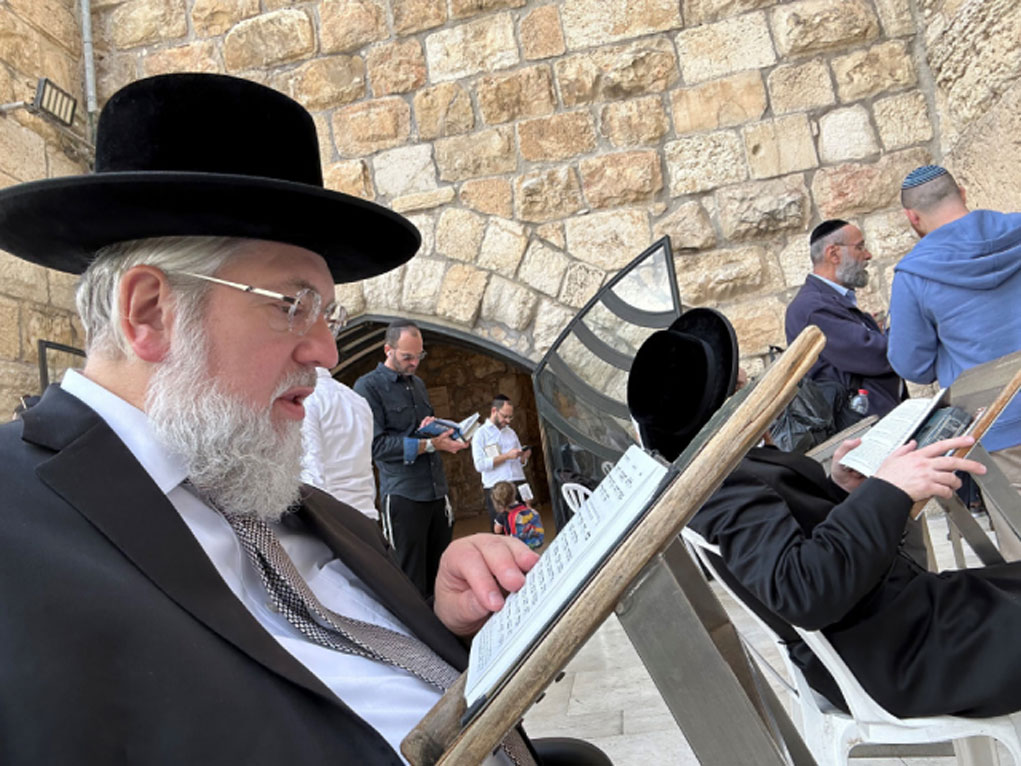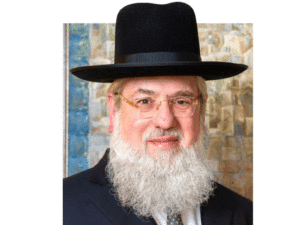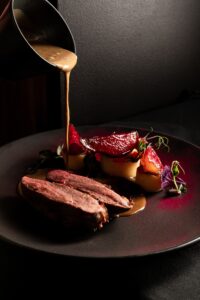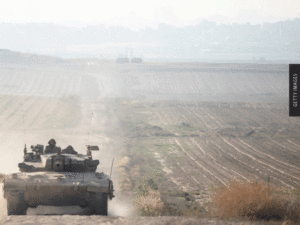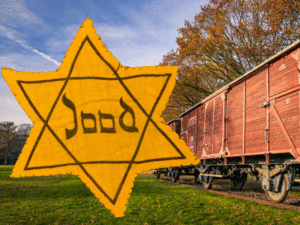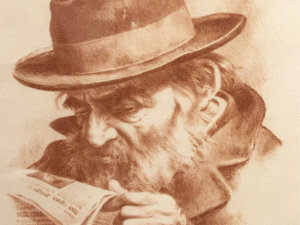Hashem was very kind to me and enabled me to spend a few days in Eretz Yisroel over this past week. I was apprehensive about going, but when such opportunities present themselves, we have to grab them, and I’m happy I did. Besides, I am a libi b’mizrach type of Yid, and being in mizrach was refreshing and reinvigorating.
I got an inkling of the type of trip I would have shortly after entering a taxi at the airport for the ride to Yerushalayim. The driver was obviously secular, though nothing is really obvious in that country, and things are not always what they seem. It is folly anywhere to judge people by outward appearances, but in that country it is doubly foolish.
We began talking. Actually, he spoke and I listened. He expressed his joy with the result of last week’s election, with the right defeating the left and chasing them from power. But that wasn’t a chiddush; everyone I spoke to during my stay there expressed similar sentiments. But this guy was sort of baring his soul. “Tishma, ani lo dati. I am not religious. But I am Jewish. And I was revolted by what the defeated government did to try to destroy the religious community. I mean, it was so obvious and so disgusting.
“I usually vote for Likud, but this time I wanted to stick it to the Left and Lieberman, so I voted for Ben-Gvir. He’s religious and he is the most likely to aggravate them. They took food out of the mouths of children and they made it difficult for the religious community.”
He hopes Ben-Gvir won’t make too much trouble.
Then he tells me that his brother’s son was chozer b’teshuvah and became a doss. He lives in Bnei Brak with his wife and children and studies in a kollel.
Scratch the surface and even irreligious people feel a kinship for their religion and want a Jewish country.
The elections clearly showed that, as the stalwart leftist parties suffered serious losses and Meretz got wiped out.
I had another similar conversation with a different taxi driver, who seemed completely secular. He had no yarmulka or tzitzis or any other indication that he has any use for religion. He was thrilled that Netanyahu won. We were driving down Rechov Meah Shearim to the Kosel and he pointed to the road that leads to Bais Yisroel. “You see that? Down that road is where I was born 74 years ago.” He hasn’t lived there in decades, but said that every morning he wakes up “kevatikin” and goes to shul to daven Shacharit. He never does anything before he davens. Go figure.
Then, since he was talking about his life and was taking us to the Kosel, he began reminiscing that he was one of the paratroopers who freed the Kosel from Jordanian occupation when he was 19 years old. He said that he is one of the soldiers in the famous picture with Rabbi Shlomo Goren blowing shofar at the Kosel when it was taken in 1967.
Then, we arrived at the Kosel. The ride was over. I handed him 34.3 shekels for the fare and was quickly forced to exit the car by a security person before I was able to ask him his name.
Once again, I didn’t know if he was shomer Shabbos, or anything about his dikduk b’mitzvos or his family, but I knew that his heart pumped Yiddishe blood and he was proud of it. He needs the latent to become vibrant. He needs his roots to bring nutrition to his body and place him firmly in the camp of Hashem, where he belongs.
I was happy to meet such people and note that despite all the problems in Eretz Yisroel, all is not lost. Yet, at the same time, it is sad to think that the connection of such people to Yiddishkeit is likely to remain on a small burner as it’s been their entire lives. And who knows what their children are like and if there is any hope for them?
But my eyes were opened and hope for the future was restored the next evening when I traveled south, to the Be’er Sheva area, with Lev L’Achim leaders. It’s been some thirty years since I was in that city, and I was expecting to encounter a dusty desert town with a smattering of kiruv activities on the fringes.
In kiruv, like much else in our world, there is much hype, and it is not always borne out by the facts. I’ve known and been involved with Lev L’Achim since its inception, and I know that their public relations doesn’t come close to what they actually do, but still, I was not prepared for what I saw.
It was Thursday evening and we went to three Lev L’Achim botei medrash in different neighborhoods. At the first stop, there were hundreds – literally hundreds – of men and boys of all ages who came to hear a shiur. Some are religious and some aren’t. And if the past is any indication, a large percentage of them will become frum as a result of the shiur and other learning activities that are held on a regular basis. Some of the young men I saw with tattoos and bare heads will go to yeshiva, a real yeshiva, and will become bnei Torah indistinguishable from their frum-from-birth peers.
I was given the honor of addressing the group, and as I rose to speak, I wondered how I would connect to the crowd. I need not have worried. As I began to speak, I felt the energy of hundreds of eyes looking towards me, and I could feel their hearts and souls opening wide to swallow Torah and chizuk.
These people weren’t lost souls. They were souls who had found their home and were heading there, making up for lost time, as they sought to reconnect and satiate themselves, just as the novi Yeshayahu foretold: Ure’isem vesos libchem v’atzmoseichem kadeshe tifrachna.
The energy in the room was palpable. Nobody forced them to come, but amazingly, they flocked to hear words of Torah, adding meaning and joy to their lives. At the shiur and during the other activities, there is no pressure placed on anyone.
It is the eternal Jewish soul that pulls them there, and then it is the Torah itself that draws them in, more and more, deeper and deeper.
From there, we went to a different shiur in a different Lev L’Achim bais medrash in another part of town. A smaller group than the first stop, but impressive nonetheless. As we entered, I saw a young fellow saying the shiur and couldn’t help but notice in the front row an old man named Charlie, who everyone seemed to know.
Then I found out the rest of the story. The young man saying the shiur is Rav Dovid Bitton, who is said to be a talmid chochom who you could test on Shas. He looks like a very fine young ben Torah. That’s true. But he also happens to be a baal teshuvah who was attracted to the Lev L’Achim learning activities as he was professionally playing soccer. One thing led to another, and now he has a frum wife and family. He learns in a local kollel and gives back by saying shiurim to ignite the neshamos of fellow Be’er Sheva-ites.
And Charlie? Charlie is his father.
There was another shiur we went to, also given by a yungerman, who eight years ago began attending Lev L’Achim shiurim and today is a full-fledged ben Torah. The room was packed with teenagers, and not one of them looked like they were on the path to Torah and a yeshiva. But looks are deceiving. There was a big soccer game that night between the Be’er Sheva soccer team and a team from Spain, but these boys gave up their tailgating parties to come to learn. They were all looking forward to heading over to the stadium after the shiur.
Last year, 83 boys such as those we had seen at the shiur went to yeshiva and blended in with the bochurim who hailed from the types backgrounds you would expect.
I met such a boy and his family. It was in a yishuv named Paamei Tashaz, the footsteps of 1948. A 16-year-old boy named Omri made a siyum on Maseches Megillah. This is the first masechta he learned, and he was totally areingeton and dedicated to understanding it. He is still in public school, and I don’t know the level of his parents’ observance, but the holiness of his neshomah is evident, as the Torah he has studied is charging him.
The siyum was a festive, catered, fleishige affair, with Omri, his family’s friends and local yishuvniks in attendance. A yeshiva bochur approached me and introduced himself. He’s Omri’s older brother and he learns in Rav Nissan Kaplan’s yeshiva. It wasn’t that long ago that he looked like Omri, but thanks to Lev L’Achim and its dedicated people, he’s well on his way to a productive Torah life.
Be’er Sheva is a city with a rich history, as we learn in this week’s parsha that it was given its name because it was there that Avrohom made a bris (covenant) with Avimelech after Avrohom reprimanded him when his people destroyed Avrohom’s water well (Bereishis 21:31).
Following the bris, Avrohom established his aishel, from where he educated people about Hashem (Bereishis 21:33, Rashi).
What is going on there seems unbelievable and I ask my hosts how it happens. They themselves don’t know. They say that there is a special siyata diShmaya at work. I say that perhaps it is in the zechus of Avrohom’s eishel and his efforts to spread kedusha and yedias Hashem in Be’er Sheva that the revival is taking place there. Tzaddikim set up eishels to teach Torah and bring kedusha to the local residents and are meeting with phenomenal success. They attract boys off the street and work and learn with them. The yearning of their neshamos becomes satiated. From a small spark, a giant torch emerges.
In our cynical world, it sounds bizarre, strange and untrue that such a phenomenon can be going on, but believe me. it is true. I was there. I saw it. And the next time you are in Eretz Yisroel, I recommend that you check it out for yourselves. You will be transformed and mesmerized.
Lev L’Achim began around the same time that this newspaper was born, and ever since then, we have been partnering with them in explaining what they do, trying to help them maintain and expand their activities.
The people who run the organization and those who work for it – 3,000 volunteers – form the nucleus of the movement of bnei Torah that is changing the face of Eretz Yisroel. The people we met and those I traveled with are highly intelligent and multi-faceted. They don’t confine themselves to prescribed parameters. They are tzaddikim with huge hearts and neshamos who use all their abilities to spread the shadow of holiness the best they can, reaching and teaching Jews, one by one, by the hundreds and the thousands.
You have probably never heard of Rav Tuvia Levenshtein, a veritable ball of fire, who is responsible for the southern areas of Eretz Yisroel for Lev L’Achim. His phone didn’t stop ringing, with people asking him questions of pikuach nefesh. Some questions he answered himself based on past experiences and others he forwarded to gedolei Torah. Listening to the questions and how he fielded the calls was a chizuk in emunah and in the power of individuals to effect change, building and supporting people and helping to bring Moshiach.
There was more to the trip, but that will have to wait for a different week.
Wherever I went while in Eretz Yisroel, I found reason for inspiration and chizuk, from walking the streets of Geulah and Meah Shearim and speaking to people to just watching regular people daven and go about their day. As I walk and gaze, I hold a small camera in my hand and photograph my subjects.
Each picture is a gorgeous poem waiting to be written. But for now, just viewing them suffices to remind me of who we are and what we can be if we remain optimistic, driven by our neshomah and yeitzer tov to do good things for ourselves, for others, and for Klal Yisroel.
